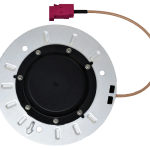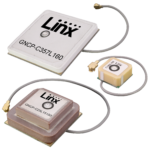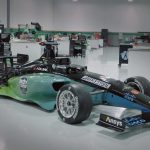Taoglas, a provider in antenna designs, unveiled its new active, multiband GNSS antennas, the MagmaX2 AA.200 and Colosseum X XAHP.50, engineered for applications that require critical high-accuracy positioning and timing, including autonomous driving and precision agriculture applications. The lightweight, cost-sensitive compact antennas can obtain similar levels of multipath rejection compared to conventional geodetic antenna, according to the company.
“Safety standards for autonomous vehicles (UAVs, robotics and vehicles) and precision agriculture is an ever evolving arena, however it’s increasingly apparent that high-precision positional accuracy is critical for both. At Taoglas we’re continuously innovating our GNSS antennas to deliver the very best precise location capabilities, but in more lightweight, compact structures. We look at the impact the antenna has on the actual positioning performance of your system, not just the antenna itself,” said Ronan Quinlan, Co-CEO and Founder of Taoglas.
He added that the MagmaX2 AA.200 is designed for products where space and weight constraints are at a premium, such as with a robotic lawnmower. Embedded antenna versions are also available. The two new antennas add to Taoglas’ portfolio of high-precision GNSS antennas, the products of over 16 years of GNSS antenna expertise.
“The Colosseum X XAHP.50 geodetic quality small dome antennas are more suitable for a roof vehicle mount, or pole mount. Every element and aspect of the antenna performance has been optimized during the design of this antenna. This includes many deep interlocking rf parameters for true accurate centimetre level positioning, compared to legacy meter only level systems. Phase center variation, group delay, multipath rejection, axial ratio over angle all become critical considerations and performance targets,” said Ronan.
“In the design phase we simulate using Electromagnetic analysis software and tweak every parameter. Once we are happy with the results we build our prototypes and test in scientifically controlled chamber and test environments validated by the European Space Agency, with repeatable GNSS signals. We then move onto field testing in open sky conditions and in non-line of sight environments to verify real world performance with today’s state of the art receiver systems. What’s more every single antenna coming off our production line goes through strict in-line sensitivity testing to ensure consistent validated performance. We take our commitment to quality and safety very seriously in the coming age of autonomous operation,” Ronan continued.
The MagmaX2 AA.200 is a low profile active multiband GNSS magnetic mount antenna for use across most major constellations including GPS (L1/L2/L5), GLONASS (G1/G2/G5), Galileo(E1/E5a/E5b) and BeiDou(B1/B2). It exhibits excellent gain and good radiation pattern stability leading to a reliable GPS fix in areas of weaker signal strength. Positional accuracy better than 60cm (DRMS) is achievable, even without using RTK correctional services. Accurate positioning down to 1.4cm has been demonstrated with today’s multiband GNSS receivers and RTK services in the field.
[Photo above: MagmaX2 AA.200. All photos courtesy Taoglas.]

The Colosseum X XAHP.50 is engineered to operate with high precision capabilities on the full GNSS spectrum. Sub meter positional accuracy better than 55cm (DRMS) is achievable, even without the use of RTK correctional services. This allows the user to achieve higher location accuracy, as well as stability of position tracking in urban environments. The XAHP.50 has excellent performance across the full bandwidth of the antenna and its design has an even gain across the hemisphere giving broad axial ratio which in turn makes it resilient to multipath rejection and excellent phase centre stability. Accurate positioning down to 1.4cm has been demonstrated with today’s multiband GNSS receivers and RTK services in the field.






